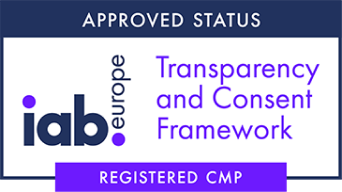Posters in the metro, TV commercials, press inserts… Traditional advertising has long been the king of channels for raising brand awareness. But since the rise of social networks, the cards have been reshuffled! Content creators are gaining ground, to the point of becoming the pillars of a new form of communication, more human, more targeted, and often more profitable.
So, in 2025, should we still rely on traditional advertising or bet everything on influencers? Spoiler: the answer often lies somewhere in between. Casaneo explains…
Why the changeover? A question of trust?
Of course it is! Any professional will tell you that trust is the key to achieving your marketing objectives. What’s more, today’s consumers are not the same. They are no longer seduced by a simple, well-crafted advertising promise. What they’re looking for today is ” authenticity “!
According to a study by Nielsen, over 90% of consumers trust recommendations from a private individual more than brand advertising.
Picture the scene: you come across an Instagram post by a designer you’ve been following for months. She’s showing off a product she uses in her routine, without forcing the sale. Opposite? A cold banner flashing across the top of your screen. The choice is quickly made.
Content shared by an influencer, perceived as a real experience, generates much more buy-in than an intrusive advertising message.
Influencer marketing: figures that speak for themselves
Another undeniable advantage ofinfluencer marketing is that influencer campaigns don’t just engage more, they perform!
Here are the key figures for 2025:
- The average engagement rate for an influencer campaign is 4%, compared with less than 1% for a traditional display campaign.
- Average ROI: for every euro invested, influencer marketing yields around 5 euros, compared with 2 euros for traditional PPC advertising.
- The global influencer marketing market is estimated at $23.6 billion in 2025, with a projection of $71.04 billion by 2032.
In other words, influencers are no longer a marketing plus. They’ve become a strategic lever.
What is the strength of influencer marketing?
It’s no coincidence that influencer marketing is so appealing. It rests on powerful pillars that meet the expectations of today’s consumers: authenticity (of course), proximity and impact.
Authenticity first
Designers share moments from their lives, anecdotes, product tests… It’s a far cry from a slick advertising message. This transparency creates a strong emotional bond.
Example: a cosmetics brand that collaborates with a micro-influencer specialized in skincare obtains more than just placement: it gains credibility.
Ultra-precise targeting
Do you sell Scandinavian design furniture? There are minimalist decor influencers with a following that’s exactly your core target. Thanks to them, you’ll reach a committed, qualified and already convinced audience.
Concrete results
Influencer marketing isn’t just about likes. It’s about sales, visits to your site, newsletter sign-ups, user-generated content (UGC). In short, action.
Influencer marketing and traditional advertising: a comparison
Here’s a chart comparing influencer marketing and traditional advertising
| Criteria | Influencer marketing | Traditional advertising |
| Trust | High (over 90% trust designers) | Lower, brand-centric |
| Commitment rate | 4% average | Lower (varies by channel) |
| Cost flexibility | Scalable, depending on designer’s size | High initial investment |
| ROI | Around 5 euros for every euro invested | Approx. 2 euros for every euro spent |
| Content lifetime | Longer. It remains visible in the news feeds | Short, often ignored |
| Targeting | Community-based niche targeting | Branded targeting, based on demographic data |
Why pit influence against traditional advertising? The hybrid has a future
Of course, even if influencer marketing is gaining ground, traditional advertising is still far from being completely obsolete. Indeed, even if its market share is shrinking (by around 30% by 2025), it remains an important means of communication. Let’s not forget that classic advertising is also capable of reaching certain audiences.
So rather than choosing between influencer marketing and traditional advertising, why not combine them? The trend in 2025? Mix the two worlds to get the best out of them. This is known as thehybrid approach , or “whitelisting” influencer advertising.
How does it work? You transform a creator’s authentic content into sponsored advertising, broadcast via your own advertising channels.
The benefits?
- Higher click-through rates, as the content resembles an organic publication.
- Reduced advertising fatigue, as content is perceived as fresher, more human.
- Optimized ROI, because you benefit from the creator’s trust + the reach of paid Ads.
Some studies have shown that these hybrid formats increase conversion rates by 30-60% compared with traditional advertising alone.
Which strategy to choose? Three winning approaches
Of course, being inspired by trends doesn’t mean adopting them indiscriminately. Influencer marketing, traditional advertising or both, the choice will depend on your objectives, your target and your resources.
Your target is on the network?
Focus on influencer marketing if you are :
- A direct-to-consumer brand that wants to create a strong, lasting relationship with its community.
- An e-commerce business that wants to build its reputation on authentic values.
- A brand positioned in niches (organic cosmetics, minimalist decor, ethical fashion, etc.) whose audience is already active on Instagram, TikTok or YouTube.
Large-scale campaigns?
Invest in traditional advertising if :
- You want to maximize your visibility quickly, over a wide area, through channels such as TV, press or billboards.
- You have substantial budgets to finance mass campaigns.
- You need a clear, uniform message that is 100% controlled by the brand (product launch, repositioning…).
Are you banking on performance?
Adopt the hybrid approach to :
- Reuse an influencer’s authentic content in a sponsored ad to benefit from trust while expanding the audience.
- Target both engaged communities (via organic influence) and cooler audiences (through Ads).
- Optimize overall performance by testing, measuring and recycling the most effective content.
The future belongs to those who create with authenticity
Influencer marketing is not a fad, it’s a paradigm shift. In 2025, the brands that shine are those that rely on trust,commitment and more human communication.
And the good news is that you don’t have to choose between influencer marketing and traditional advertising. The real strength lies in intelligently combining the two.
Turn your authentic content into high-performance advertising. Casaneo is with you every step of the way.








